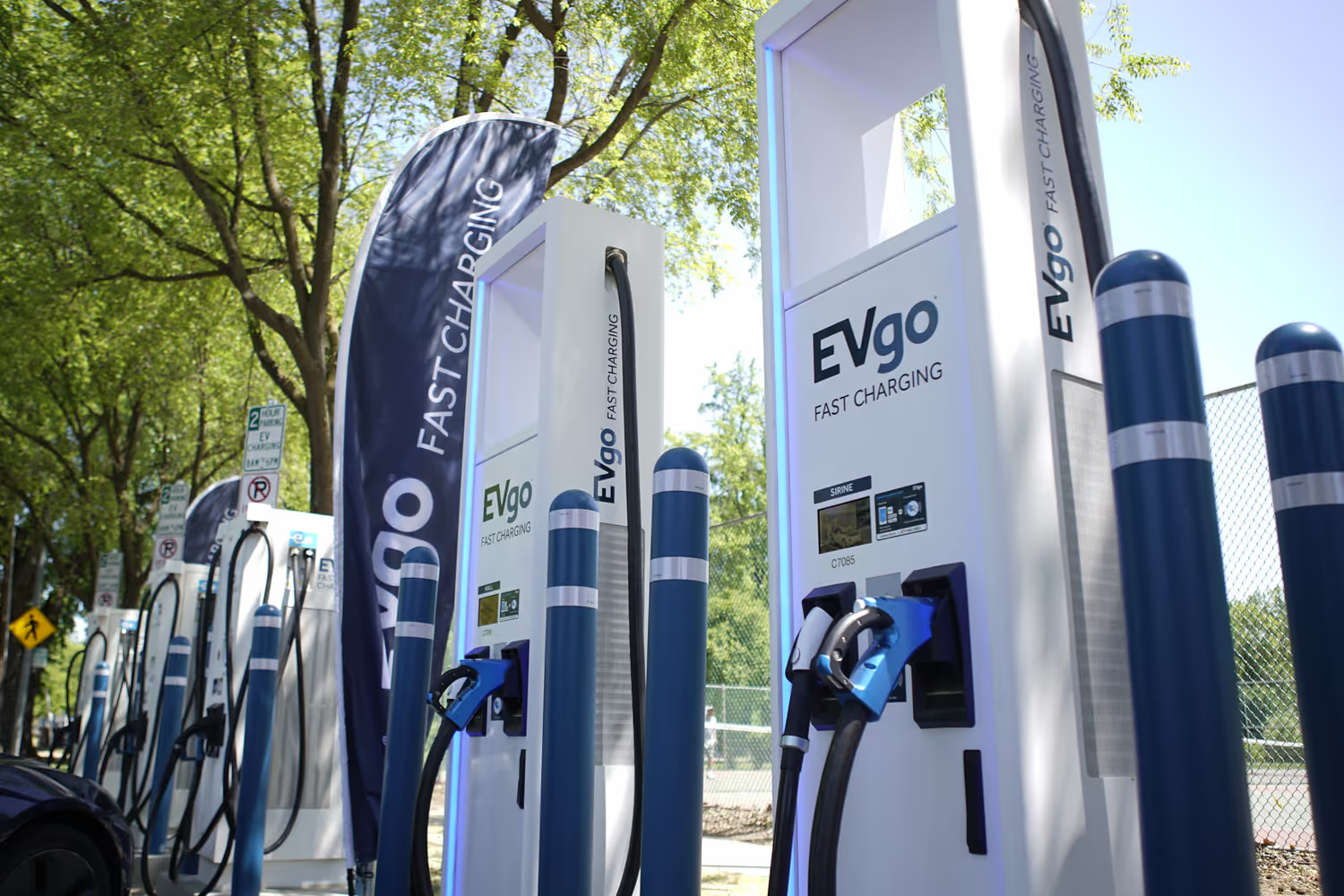Investing in the Grid for the EV Future
Many electricity providers see EVs as a key part of future grid resiliency.
Learn more
Concerns about electricity providers’ ability to power millions of EVs tend to ignore the fact that providers are actively making investments and have time to prepare for an EV future.

Do we risk crashing the grid with so many EVs charging at the same?
The threat of drivers charging their EVs all at once and breaking the grid is a myth. The US fleet of EVs used 24 terawatt hours (TWh) of electricity in 2023, accounting for just 0.59% of the total national energy generation. At the same time, EV drivers primarily charge their vehicles at night, when grid demand and costs are lowest.
While there are certainly infrastructure updates that will and are being implemented to improve the grid, electricity providers are planning for the changing market. In the future, EVs could be a key part of grid resiliency through bidirectional charging and other technical improvements.
Tax credits from the Inflation Reduction Act (IRA) are available to assist homeowners looking to install a L2 charger until June 30, 2026, and there are many options on the market for Level 2 chargers that can be installed at home. Some localities also provide additional support for homeowners—be sure to check for support in your state.
How will EVs affect our electricity needs?
As drivers transition away from gasoline and toward electricity to power their vehicles, more power generation will be needed. Estimates suggest that an additional 15-27 TWh (0.3%-0.6% capacity per year) of annual new power generation will be needed between now and 2050. Past precedent suggests that this is more than achievable, given that nearly 100 TWh of generation has been added in a single year.

As the above figure illustrates, the U.S. electric power system has evolved over time to accommodate new energy demand. A series of straightforward assumptions and unit conversions by the Department of Energy allows the viewer to place additional potential charging load from future EVs in the context of this historical data.
Assuming each EV travels 12,000 miles annually, consuming approximately 300 Wh/mi of AC energy, and assuming 4.9 % system losses for transmission and distribution, then each EV will require 3.8 MWh/year of energy generation. For the 2030 low, medium, and high EV sales scenarios, this translates into 1, 8, and 26 TWh of incremental energy generation, respectively. These increases in energy generation are relatively small compared to the 100 TWh range shown in Figure 3. As the figure confirms, historically, there have been periods of time when the grid added in excess of 25 million vehicles-worth of generation per year, the equivalent of roughly 150% of annual new light-duty vehicles sales in the U.S. today. For more information, please click here.
Electricity providers have a history of innovating to meet the United States’ growing energy needs. In the past, as more homes became reliant on refrigerators, air conditioning, and other energy intensive appliances, electricity providers built more energy generating capacity, invested in high-voltage transmission lines, and even explored enhanced grid technologies that could shift power use to off-peak hours. EVs are an extension of this trend, and electricity providers have a good track record of managing demand growth locally and nationally.
How are electricity providers preparing for EVs?
Power generation is only part of the conversation when preparing for an EV future. Electricity providers are also looking at ways to manage demand in real time, as well as accurately predict when and where increases in demand will occur.
This is because demand is not constant, but rather has regular peaks throughout the day with high demand generally taking place between 5:00-8:00 PM, dependent on your region.
Several ZETA members detailed a few of their efforts in ZETA’s 2023 policy brief “Powering the EV Market: How Electricity Providers are Planning for the Future.”
How does bidirectional charging work? Will opting into vehicle to grid programs drain my battery?
Bidirectional charging allows you to transfer the power in your vehicle’s battery to another source. This can take place in several different forms, including:
- Vehicle to Grid (V2G): providing power back to the grid through your electricity provider.
- Vehicle to Building (V2B): providing power to a building, such as your home during a power outage.
- Vehicle to Load (V2L): providing power to an appliance, such as to power tools on a job site.
- Vehicle to Vehicle (V2V): providing power to another vehicle.
There are few vehicles on the market today capable of bidirectional charging. Still, it is seen as a unique opportunity and benefit to driving an EV, with many future models being built with the capability.

V2G in particular provides the opportunity for drivers to earn money by returning power to the grid during periods of high demand while the vehicle is not in use. Researchers from the University of Delaware suggest that drivers could earn up to $1,500 per year by participating in a V2G program, depending on vehicle capabilities and the market and regulations in their region. Many electricity providers are currently pursuing pilot programs to test the technology.
Like managed charging programs that allow drivers to set preferences on when and how much to charge using smart EV supply equipment, drivers have control over when and how much electricity they send back to the grid.



